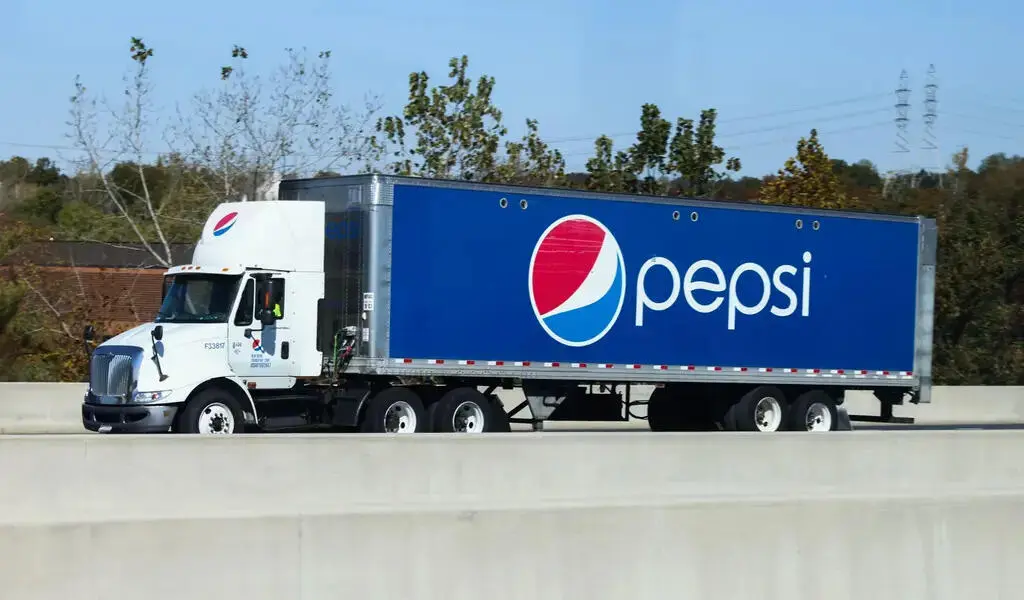Business
Reshaping Retail: How E-commerce Innovates to Match Consumer Behavior Shifts

The digital era, along with the profound effects of the recent global health crisis, has precipitated a significant transformation in consumer behavior. As a result, e-commerce businesses have had to quickly adapt to this evolving landscape. This article explores how e-commerce businesses are adjusting their strategies and operations to meet the shifting needs and expectations of customers.
With brick-and-mortar stores facing restrictions, the online marketplace has seen an unprecedented surge in demand. Consumers are not only seeking products and services online but are also expecting seamless, personalized, and interactive shopping experiences. In response, e-commerce enterprises are embracing technological advancements, innovative business models, and data-driven strategies.
They are striving to understand the changing dynamics of consumer behavior in order to offer more tailored solutions, enhance customer engagement, and ultimately ensure long-term business sustainability.
Keith Evans the owner of Keith Evans Photography share “From reimagining customer journeys to leveraging artificial intelligence, e-commerce businesses are at the forefront of this change, adapting to thrive in this new reality.
By understanding and catering to the evolving needs of consumers, e-commerce businesses are paving the way for a more digitally driven future.” In this article, we will delve deeper into how these businesses are adapting to changing consumer behaviors and what it means for the future of commerce.
The landscape of e-commerce is constantly evolving, driven by shifts in consumer behavior. The advent of digital technology has significantly impacted the way consumers interact with businesses, prompting e-commerce enterprises to adapt quickly to these changes. Here’s how they are doing it:
Personalization
Personalization is a key strategy adopted by e-commerce businesses. By using data-driven insights, businesses can tailor their offerings to individual customer preferences, enhancing the shopping experience and fostering customer loyalty.
Mobile Optimization
According to Ava James Marketing Assistant at Sparkaven. The surge in smartphone usage has necessitated businesses to optimize their websites for mobile devices. E-commerce sites are ensuring seamless navigation, user-friendly interfaces, and secure payment gateways to boost mobile conversions.
Omnichannel Presence
Consumers today seek a consistent shopping experience across all channels. E-commerce businesses are therefore integrating their online and offline presence, enabling customers to shop whenever and wherever they prefer.
Demand for Sustainable Practices
Changing consumer values have led to a growing preference for sustainable and eco-friendly products. E-commerce businesses should integrate sustainable practices into their supply chains, highlight environmentally friendly options, and communicate transparently about their commitment to corporate social responsibility.
Integration of Technology
The evolution of consumer behaviors necessitates the integration of advanced technologies such as AI, augmented reality, and virtual reality in the e-commerce experience. Businesses can leverage these technologies to provide immersive product experiences, personalized recommendations, and efficient customer service.
AI and Machine Learning
AI and Machine Learning are spearheading the e-commerce industry’s evolution. These technologies are used for everything from personalized recommendations to streamlining logistics, making shopping more convenient and efficient for consumers.
Katrina Elbahey, CEO and Founder of Matchmaking Services explains the four main impacts of changing consumer behaviors on e-commerce businesses and recommended strategies for adaptation. She believes that by embracing these changes and implementing the suggested strategies, e-commerce businesses can thrive in a constantly evolving market. It’s essential to prioritize customer needs and stay updated with industry trends to maintain a competitive edge in the digital world.
Digital Transformation and User Experience
Impact: Consumers increasingly prefer seamless and personalized digital experiences.
Adaptation: E-commerce businesses must invest in user-friendly interfaces, optimize mobile responsiveness, and leverage data analytics to personalize user experiences. Integration of technologies like AI and chatbots can enhance customer interactions.
Shift in Shopping Channels
Impact: The rise of omnichannel shopping habits, including social media and marketplaces.
Adaptation: E-commerce businesses should diversify their presence across multiple channels, including social media platforms and popular online marketplaces. Integration with these channels ensures a broader reach and increased visibility.
Demand for Sustainability and Ethical Practices
Impact: Consumers are increasingly conscious of sustainability and ethical practices.
Adaptation: E-commerce businesses should adopt and promote sustainable practices in their operations, sourcing, and packaging. Transparent communication regarding ethical standards can build trust with environmentally conscious consumers.
Rapid Changes in Supply Chain Management
Impact: Consumers expect faster and more reliable delivery options.
Adaptation: E-commerce businesses should optimize their supply chain processes, invest in advanced logistics technologies, and explore partnerships with reliable delivery services. Offering flexible and expedited shipping options can enhance customer satisfaction.
Strategies for E-commerce Businesses to Stay Competitive
As consumer behavior evolves, it’s crucial for e-commerce businesses to adapt swiftly and effectively. Here are some strategies they can implement to stay competitive:
Invest in Analytics
Harness the power of big data and analytics to understand your customers’ purchasing behavior better. Detailed insights can help you make informed business decisions and predict future trends.
Says Milly Barker, an Entrepreneur and the Founder of Remote Pad
Improve Customer Service
Customer service is a significant differentiator in today’s competitive e-commerce landscape. Invest in chatbots and support teams to ensure inquiries and issues are handled promptly and effectively.
Enhance Website Usability
The usability of your website directly impacts the shopping experience. Ensure your site is easy to navigate, visually appealing, and quick to load.
Secure Customer Trust
In an era of increasing data breaches, earning customer trust is paramount. Implement robust security measures to protect customer data and communicate these measures clearly to your customers.
Offer Unique Product/Service
Identify your USP (Unique Selling Proposition) and capitalize on it. It could be anything from exclusive products to a unique shopping experience.
Leverage Social Media
Social media channels can be effective tools for promoting your products, engaging with your audience, and building brand loyalty.
Consistent Updating
Stay abreast with the latest tech updates and industry trends. Regularly update your website and business strategies to stay relevant in the ever-evolving e-commerce landscape.
By incorporating these strategies, e-commerce businesses can adapt to changing consumer behaviors and maintain a competitive edge in the market. It’s a continuous process of learning, adapting, and improving, but the rewards are well worth the effort.
The global e-commerce landscape is experiencing a dynamic transformation due to evolving consumer behaviors and expectations. Customers now seek a seamless and personalized digital shopping experience. They are increasingly conscious of sustainability and ethical practices, demanding transparency from businesses.
Furthermore, the rise of omnichannel shopping habits, including social media shopping and marketplaces, has intensified competition and increased the need for businesses to diversify their presence. The swift changes in supply chain management also impact e-commerce businesses, with customers expecting faster and more reliable delivery options.
To stay competitive, e-commerce businesses must adapt by investing in user-friendly interfaces, optimizing mobile responsiveness, leveraging data analytics, and integrating advanced technologies. They should also adopt sustainable practices, diversify their presence across multiple channels, and optimize their supply chain processes. The adaptations are crucial for e-commerce businesses to meet the rapidly changing consumer demands, maintain a competitive edge in the market, and drive business growth.
SEE ALSO: BuzzFeed President Marcela Martin To Resign For New Opportunities
Business
PepsiCo Reduces Revenue Projections As North American Snacks And Key International Markets Underperform.

(VOR News) – In the third quarter of this year, Pepsi’s net income was $2.93 billion, which is equivalent to $2.13 per share. This was attributed to the company.
This is in stark contrast to net income of $3.09 billion, which is equivalent to $2.24 per share, during the same period in the previous year. The company’s earnings per share were $2.31 when expenses were excluded.
Net sales decreased by 0.6%, totaling $23.32 billion. Organic sales increased by 1.3% during the quarter when the effects of acquisitions, divestitures, and currency changes are excluded.
Pepsi’s beverage sales fell this quarter.
The most recent report indicates that the beverage and food sectors of the organization experienced a 2% decline in volume. Consumers of all income levels are demonstrating a change in their purchasing habits, as indicated by CEOs’ statements from the previous quarter.
Pepsi’s entire volume was adversely affected by the lackluster demand they encountered in North America. An increasing number of Americans are becoming more frugal, reducing the number of snacks they ingest, and reducing the number of times they purchase at convenience stores.
Furthermore, Laguarta observed that the increase in sales was partially attributed to the election that occurred in Mexico during the month of June.
The most significant decrease in volume was experienced by Quaker Foods North America, which was 13%. In December, the company announced its initial recall in response to a potential salmonella infection.
Due to the probability of an illness, the recall was extended in January. Pepsi officially closed a plant that was implicated in the recalls in June, despite the fact that manufacturing had already been halted.
Jamie Caulfield, the Chief Financial Officer of Pepsi and Laguarta, has indicated that the recalls are beginning to have a lessening effect.
Frito-Lay experienced a 1.5% decline in volume in North America. The company has been striving to improve the value it offers to consumers and the accessibility of its snack line, which includes SunChips, Cheetos, and Stacy’s pita chips, in the retail establishments where it is sold.
Despite the fact that the category as a whole has slowed down in comparison to the results of previous years, the level of activity within the division is progressively increasing.
Pepsi executives issued a statement in which they stated that “Salty and savory snacks have underperformed year-to-date after outperforming packaged food categories in previous years.”
Pepsi will spend more on Doritos and Tostitos in the fall and winter before football season.
The company is currently promoting incentive packets for Tostitos and Ruffles, which contain twenty percent more chips than the standard package.
Pepsi is expanding its product line in order to more effectively target individuals who are health-conscious. The business announced its intention to acquire Siete Foods for a total of $1.2 billion approximately one week ago. The restaurant serves Mexican-American cuisine, which is typically modified to meet the dietary needs of a diverse clientele.
The beverage segment of Pepsi in North America experienced a three percent decrease in volume. Despite the fact that the demand for energy drinks, such as Pepsi’s Rockstar, has decreased as a result of consumers visiting convenience stores, the sales of well-known brands such as Gatorade and Pepsi have seen an increase throughout the quarter.
Laguarta expressed his opinion to the analysts during the company’s conference call, asserting, “I am of the opinion that it is a component of the economic cycle that we are currently experiencing, and that it will reverse itself in the future, once consumers feel better.”
Additionally, it has been noted that the food and beverage markets of South Asia, the Middle East, Latin America, and Africa have experienced a decline in sales volume. The company cut its forecast for organic revenue for the entire year on Tuesday due to the business’s second consecutive quarter of lower-than-anticipated sales.
The company’s performance during the quarter was adversely affected by the Quaker Foods North America recalls, the decrease in demand in the United States, and the interruptions that occurred in specific international markets, as per the statements made by Chief Executive Officer Ramon Laguarta.
Pepsi has revised its forecast for organic sales in 2024, shifting from a 4% growth rate to a low single-digit growth rate. The company reiterated its expectation that the core constant currency profitability per share will increase by a minimum of 8% in comparison to the previous year.
The company’s shares declined by less than one percent during premarket trading. The following discrepancies between the company’s report and the projections of Wall Street were identified by LSEG in a survey of analysts:
SOURCE: CNBC
SEE ALSO:
Old National Bank And Infosys Broaden Their Strategic Partnership.
Business
Old National Bank And Infosys Broaden Their Strategic Partnership.

(VOR News) – Old National Bank, a commercial bank with its headquarters in the Midwest, and Infosys, a firm that specializes in information technology, have recently entered into a strategic expansion of their link, which has been in place for the past four years.
This expansion is more likely to take place sooner rather than later, with the likelihood being higher.
For the purpose of making it possible for Old National Bank to make use of the services, solutions, and platforms that are offered by Infosys, the objective of this expansion is to make it possible for the bank to transform its operations and processes through the application of automation and GenAI, as well as to change significant business areas.
This lets the bank leverage Infosys’ services, solutions, and platforms.
Old National Bank Chairman and CEO Jim Ryan said, “At Old National, we are committed to creating exceptional experiences for both our customers and our fellow employees.”
This statement is applicable to Old National Bank. Infosys is carefully managing the business process innovations that it is putting us through, putting a strong emphasis on efficiency and value growth throughout the process to ensure that it is carried out efficiently.
This is a routine occurrence throughout the entire operation. Because of Infosys’ dedication to our development and success, we are incredibly appreciative of the assistance they have provided.
Old National has been receiving assistance from Infosys in the process of updating its digital environment since the year 2020, according to the aforementioned company.
Ever since that time, the company has been providing assistance. The provision of this assistance has been accomplished through the utilization of a model that is not only powerful but also capable of functioning on its own power.
Infosys currently ranks Old National thirty-first out of the top thirty US banks.
This ranking is based on the fact that Old National is the nation’s largest banking corporation.
It is estimated that the total value of the company’s assets is approximately fifty-three billion dollars, while the assets that are currently being managed by the organization are valued at thirty billion dollars.
Dennis Gada, the Executive Vice President and Global Head of Banking and Financial Services, stated that “Old National Bank and Infosys possess a robust cultural and strategic alignment in the development, management, and enhancement of enterprise-scale solutions to transform the bank’s operations and facilitate growth.”
This remark referenced the exceptional cultural and strategic synergy between the two organizations. Dennis Gada is the one who asserted this claim. This was articulated explicitly concerning the exceptional cultural congruence and strategy alignment of the two organizations.
We are pleased to announce that the implementation of Infosys Topaz will substantially expedite the transformation of Old National Bank’s business processes and customer service protocols. We are exceedingly enthusiastic about this matter. We are quite thrilled about this specific component of the scenario.
Medium-sized banks operating regionally will continue to benefit from our substantial expertise in the sector, technology, and operations. This specific market segment of Infosys will persist in benefiting from our extensive experience. This phenomenon will enable this market sector to sustain substantial growth and efficiency benefits.
SOURCE: THBL
SEE ALSO:
American Water, The Largest Water Utility In US, Is Targeted By A Cyberattack
States Sue TikTok, Claiming Its Platform Is Addictive And Harms The Mental Health Of Children
Qantas Airways Apologizes After R-Rated Film Reportedly Airs On Every Screen During Flight
Business
American Water, The Largest Water Utility In US, Is Targeted By A Cyberattack

The largest regulated water and wastewater utility company in the United States stated Monday that it had been the target of a cyberattack, forcing the company to halt invoicing to consumers.
American Water, The Largest Water Utility In US, Is Targeted By A Cyberattack
American Water, based in New Jersey and serving over 14 million people in 14 states and 18 military facilities, said it learned of the unauthorized activity on Thursday and quickly took precautions, including shutting down certain systems. The business does not believe the attack had an impact on its facilities or operations and said employees were working “around the clock” to determine the origin and scale of the attack.

According to their website, American Water operates over 500 water and wastewater systems in around 1,700 communities across California, Georgia, Hawaii, Illinois, Indiana, Iowa, Kentucky, Maryland, Missouri, New Jersey, Pennsylvania, Tennessee, Virginia, and West Virginia.
SOURCE | AP
-

 News3 years ago
News3 years agoLet’s Know About Ultra High Net Worth Individual
-
Entertainment2 years ago
Mabelle Prior: The Voice of Hope, Resilience, and Diversity Inspiring Generations
-

 Health3 years ago
Health3 years agoHow Much Ivermectin Should You Take?
-

 Tech2 years ago
Tech2 years agoTop Forex Brokers of 2023: Reviews and Analysis for Successful Trading
-

 Lifestyles2 years ago
Lifestyles2 years agoAries Soulmate Signs
-

 Movies2 years ago
Movies2 years agoWhat Should I Do If Disney Plus Keeps Logging Me Out of TV?
-

 Health3 years ago
Health3 years agoCan I Buy Ivermectin Without A Prescription in the USA?
-

 Learning2 years ago
Learning2 years agoVirtual Numbers: What Are They For?
